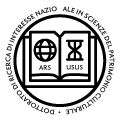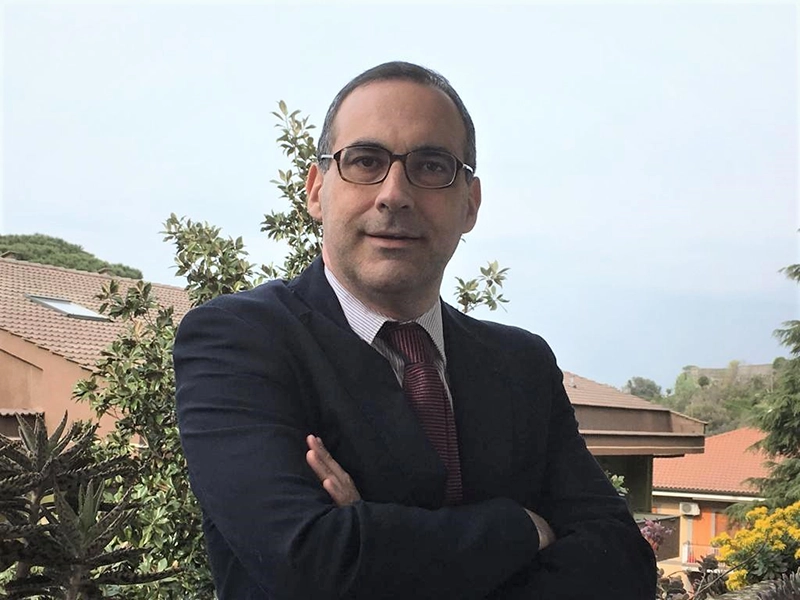Giovan Battista Fidanza
Professor of Early Modern Art History (L-Art/02)Giovanni Battista Fidanza (Perugia, 1967) is Professor of Early Modern Art History since 2018. He served the University of Rome Tor Vergata as Coordinator of the PhD Program in “Cultural Heritage, Education, and Territory” (2018-2021) and as the Rector’s Delegate and Director of “Villa Mondragone”, a monumental complex owned by the University of Rome Tor Vergata (2020-2022). From 2018 to 2021, Prof. Fidanza has been a member of the National Scientific Qualification Board (Art History-10/B1 Sector). His papers have been published in reputed international refereed journals, including: Renaissance Studies, The Burlington Magazine, Wiener Jahrbuch für Kunstgeschichte, and Artibus et Historiae. In 2022, he published (with the publisher Ad Ilissum in London) the fresco cycle by Andrea Sacchi in the loggia of Cardinal Francesco Maria del Monte’s Ripetta Palace, long held to be lost.
L-ART/02
The role of images, their history and context of production from the seventeenth century to the early years of the eighteenth century, with particular reference to the Papal States; history of sculpture and wooden furnishings in Central Italy during the Early Modern period (particularly in the Papal States and Florence), with in-depth analysis of the formal and historical-critical aspects of materials and artistic techniques; diagnostic investigation techniques applied to the study of painting and sculpture from the Early Modern Period.
Coordinator of the Research Unit at the University of Rome Tor Vergata for the PRIN Project (Programs of Scientific Research of National Relevance – MIUR) from 2010 to 2011.
2008 to present: National Coordinator (together with Dr. Nicola Macchioni from the Institute for BioEconomy-CNR) of “ArISStArt” (Archivio delle Identificazioni delle Specie Legnose dei Beni Storico-Artistici), a system that enables computerized management of the anatomical identification of wood species of wooden artifacts of art-historical interest, conceived in collaboration with the Institute for BioEconomy-CNR of Sesto Fiorentino (Florence).
From 2019 to 2022, Prof. Fidanza was a member of the editorial board of Rivista d’Arte (founded in 1903), Leo S. Olschki Publisher (since 2011, he has been a member of the editorial staff) [“Class A” Journal – ANVUR].
Prof. Fidanza is a member of the Editorial Board of Confronto. Studi e ricerche di storia dell’arte europea (2020 to present). A journal founded by Ferdinando Bologna in 2003
2013: Visiting Professor presso la Pennsylvania State University – Erie, The Behrend College (USA). Pennsylvania State University è 37a nel Country rank e 54a nel World rank dell’Academic Ranking of World Universities 2013 [www.shanghairanking.com/World-University-Rankings-2013/USA.html].
2011: Visiting Lecturer presso la Loughborough University (UK), nella School of Arts (MA Art and Design Studio Practice). Loughborough University è 14a nel Ranking of British Universities The Complete University Guide 2012 by Mayfield University Consultants.
G.B. Fidanza, Andrea Sacchi and Cardinal del Monte: the rediscovered frescoes in the Palazzo di Ripetta in Rome, London, Ad Ilissum, 2022.
G.B. Fidanza, G. Serafinelli, Patronage and devotion: a focus on six Roman Baroque paintings, London, Paul Holberton Publishing.
G.B. Fidanza, Luke Wadding’s art: Irish Franciscan patronage in seventeenth-century Rome, St. Bonaventure, NY, Franciscan Institute Publications, 2016.
N. Macchioni, L. Sozzi, G.B. Fidanza, The Relationship between Carving Work and Timber Features: a Database for the ItalianWooden Statuary, «Forests», no. 1426, vol. 164, 2022, pp. 1-17.
G.B. Fidanza, Carlo Maratti’s additions to the ‘Barberini Venus’, «The Burlington Magazine», no. 517, vol. 13, 2022, pp. 260-265 [Class A-ANVUR].
G.B. Fidanza, Prints as communication of power: Cardinal Carlo Barberini and the synods of his abbeys, «Renaissance Studies», vol. 35, issue 2, 2021, pp. 255-286 [Rivista classe A – ANVUR].
G.B. Fidanza, New evidence for the ‘Barberini Apostles’ by Andrea Sacchi and Carlo Maratti, «The Burlington Magazine», no. 1397, vol. CLXI, 2019, pp. 653-659 [Rivista classe A – ANVUR].
G.B. Fidanza, The ephemeral apparatus for the funeral of Jan III Sobieski in Rome: Cardinal Carlo Barberini’s art and politics, «Artibus et Historiae», no. 77, 2018, pp. 319-333.
G.B. Fidanza, Carlo Maratti and the Barberini family: two paintings for churches in Palestrina, «The Burlington Magazine», no. 1373, vol. CLIX, 2017, pp. 610-616 [Rivista classe A – ANVUR].
G.B. Fidanza, Donatellos Maria Magdalena. Technik und Theologie einer Holzfigur, «Wiener Jahrbuch für Kunstgeschichte», 62, 2014, pp. 127-144 [Rivista classe A – ANVUR].
G.B. Fidanza, A rediscovered altarpiece by Pietro da Cortona and insights into the collaboration between the master and his pupils, «The Burlington Magazine», no. 1325, vol. CLV, 2013, pp. 541-545 [Rivista classe A – ANVUR].
G.B. Fidanza, Wood and architecture. Pliny’s legacy in the treatises of Alberti and Cataneo, in The nature of art. Pliny the Elder on materials, a cura di A. Anguissola e A. Grüner, Turnhout, Brepols, 2020, pp. 91-99.
G.B. Fidanza, Gli inventari delle chiese prescritti dal Concilio Romano del 1725: una fonte per la storia dell’arte, in Incorrupta monumenta Ecclesiam defendunt. Studi offerti a mons. Sergio Pagano, prefetto dell’Archivio Segreto Vaticano. II Archivi, Archivistica, Diplomatica, Paleografia, a cura di A. Gottsmann, P. Piatti, A.E. Rehberg, Città del Vaticano, Archivio Segreto Vaticano, 2018, pp. 401-416 (Collana Collectanea Archivi Vaticani).


